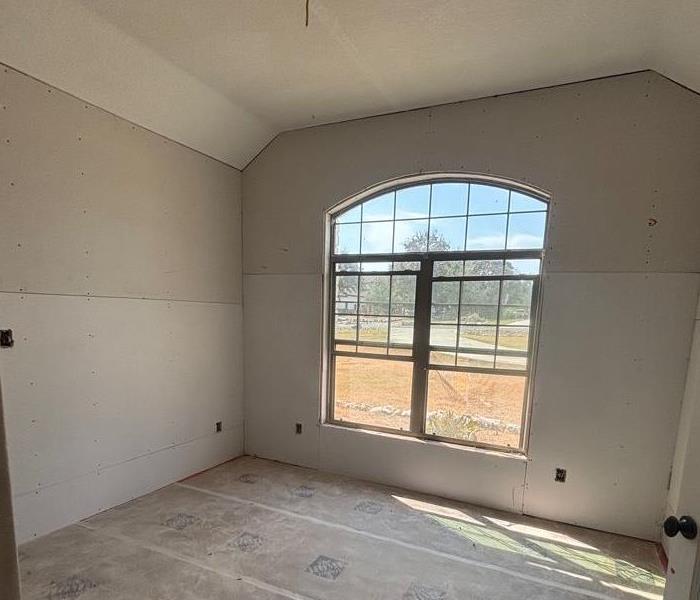The Importance of Documenting Water Damage for Insurance Claims: Expert Tips from SERVPRO®
3/31/2025 (Permalink)
 Water damage can be an overwhelming experience for any property owner, but documenting the damage is crucial for a successful insurance claim.
Water damage can be an overwhelming experience for any property owner, but documenting the damage is crucial for a successful insurance claim.
Water damage can be an overwhelming experience for any property owner, but properly documenting the damage is crucial for a smooth and successful insurance claim. Whether caused by a burst pipe, roof leak, or flooding, water damage claims require clear and thorough evidence to ensure you receive fair compensation for repairs.
At SERVPRO®, we understand how stressful the claims process can be, and we’re here to help. This guide will walk you through the importance of documenting water damage and provide expert tips to ensure your insurance claim is as seamless as possible.
Why Proper Documentation Matters for Insurance Claims
When disaster strikes, insurance companies require proof of the damage before approving your claim. Insufficient or unclear documentation can lead to claim delays, partial compensation, or even denial. Properly recording the extent of water damage strengthens your case and helps adjusters accurately assess the costs of repairs.
Key Reasons to Document Water Damage Thoroughly
- Speeds Up the Claims Process – The more detailed and organized your evidence is, the faster the insurance company can evaluate your claim.
- Ensures Fair Compensation – Without proper documentation, an adjuster may underestimate the repair costs, leading to lower reimbursement.
- Prevents Disputes with Insurers – Clear records provide undeniable proof of the damage, reducing the risk of claim disputes or denial.
- Creates a Reliable Record for Future Issues – If further damage arises due to the initial water intrusion, having thorough documentation can support additional claims.
How to Document Water Damage for an Insurance Claim
Proper documentation involves more than just taking a few pictures. Here’s a step-by-step approach to ensure you capture all the necessary details.
1. Take Clear Photos and Videos
Visual evidence is the strongest proof you can provide. Follow these guidelines when capturing water damage:
- Take photos from multiple angles – Capture close-ups and wide shots to show the full extent of the damage.
- Include timestamps – Use your smartphone or camera settings to add timestamps to photos and videos.
- Document water levels – If flooding is involved, show how high the water has risen inside your property.
- Capture affected belongings – Photograph damaged furniture, electronics, flooring, and personal items to support your claim.
2. Record Detailed Written Descriptions
In addition to visual evidence, written documentation helps paint a full picture of the damage. Make sure to:
- Describe what caused the water damage (e.g., broken pipe, storm, appliance leak).
- List the areas affected, including walls, floors, ceilings, and structural components.
- Include estimated timelines—when the damage occurred and when you discovered it.
3. Save Repair Estimates and Receipts
Gather all professional estimates, invoices, and receipts related to water damage restoration. This includes:
- Initial damage assessment from a restoration company like SERVPRO.
- Costs for emergency mitigation services (e.g., water extraction, drying equipment rental).
- Repair and reconstruction estimates from contractors.
- Receipts for damaged items that need replacement.
4. Maintain Communication Records
Keep a log of all conversations with your insurance company, including:
- The date and time of each discussion.
- The name of the representative you spoke with.
- Notes on what was discussed and any instructions given.
This documentation ensures there’s a record of every step in case any disputes arise.
FAQs: Water Damage Documentation for Insurance Claims
Q: How soon should I start documenting water damage?
A: Immediately. The sooner you begin taking photos and notes, the better. This prevents questions about when the damage occurred and ensures nothing is overlooked.
Q: What if I already started cleaning up before taking pictures?
A: If possible, try to document the damage before cleanup. If you've already started, take pictures of anything you’ve removed and keep any damaged items until an adjuster assesses them.
Q: Do I need a professional damage assessment?
A: While not always required, having SERVPRO or another professional restoration company provide an assessment can add credibility to your claim and ensure all damage is properly evaluated.
Q: Should I document small water damage incidents?
A: Yes. Even minor water damage can worsen over time, leading to costly repairs. Keeping records of any incident helps protect you in case of future claims.
Q: Can SERVPRO assist with the insurance claims process?
A: Absolutely! Our team works closely with insurance companies, providing detailed documentation and professional assessments to streamline your claim.
Trust SERVPRO to Help with Water Damage and Insurance Claims
Dealing with water damage is stressful enough without having to worry about insurance claim complications. By documenting the damage properly, you increase your chances of receiving fair compensation while minimizing claim delays.
At SERVPRO, we’re here to help. From emergency water removal to detailed damage assessments, our team works alongside you and your insurance company to ensure a smooth restoration process. If you’ve experienced water damage, contact SERVPRO today for expert assistance.

 24/7 Emergency Service
24/7 Emergency Service